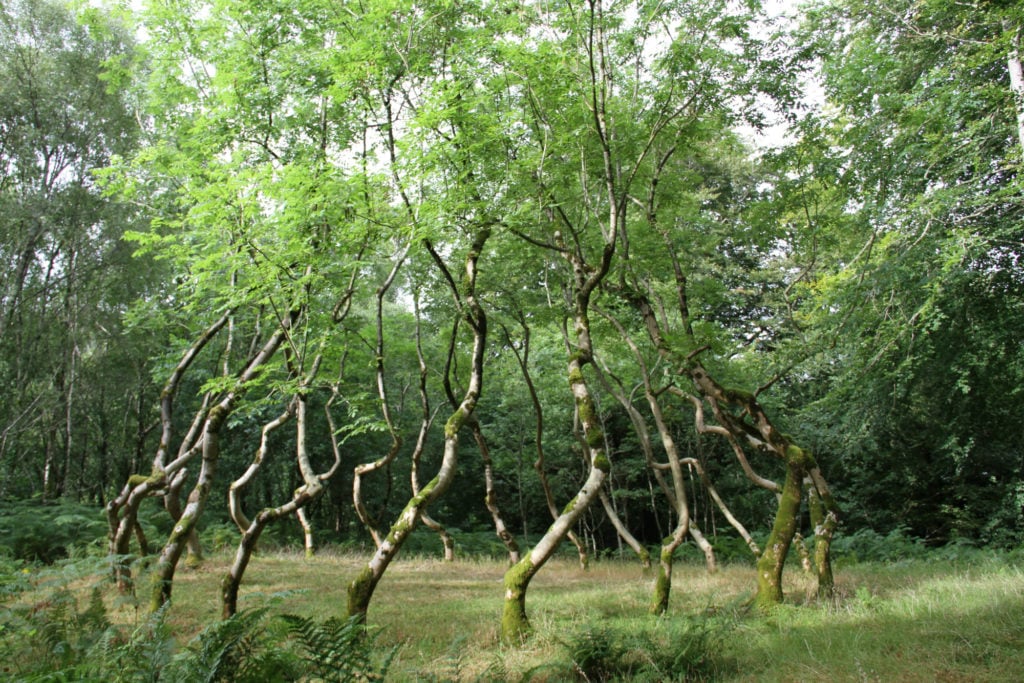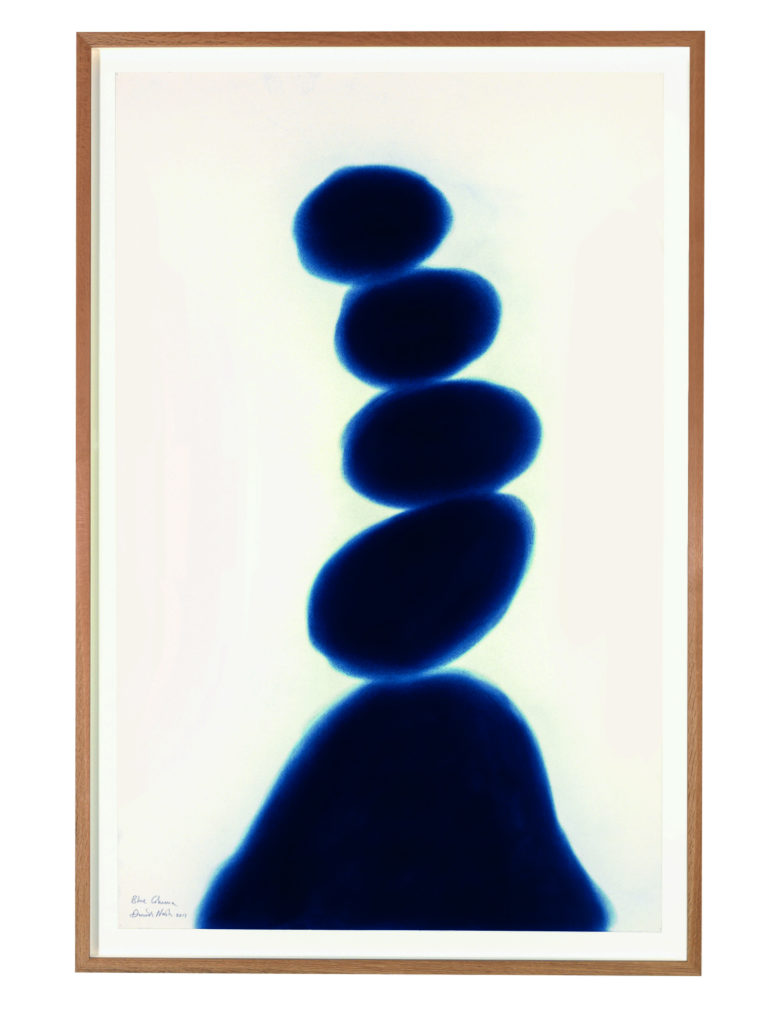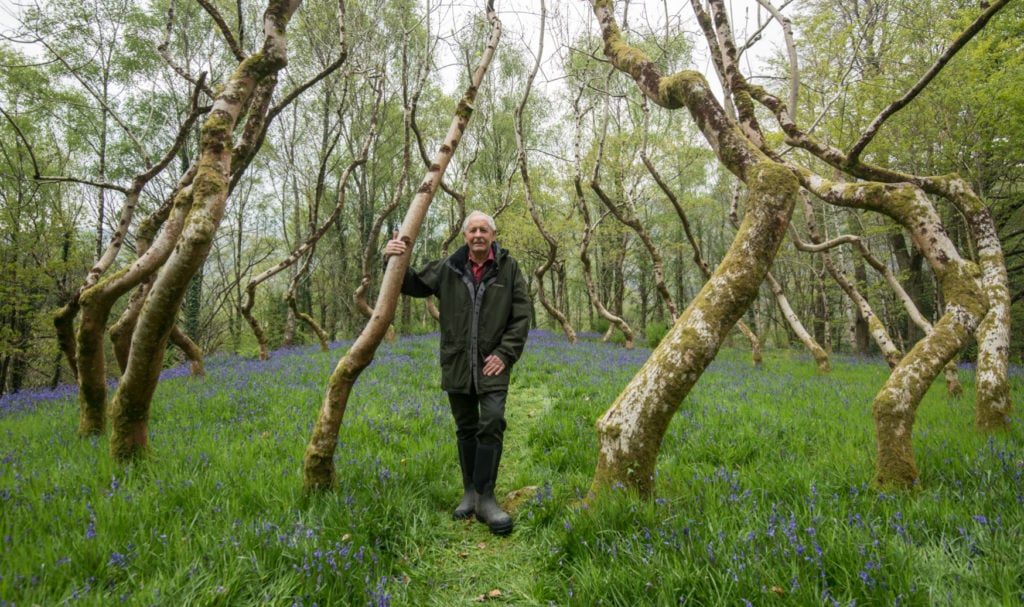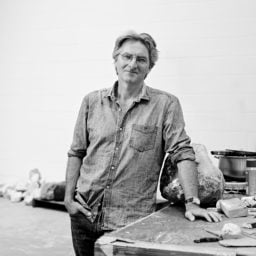The British sculptor David Nash’s Ash Dome is dying. The remarkable work of Land Art, which he planted as a young artist at a secret location deep in the Welsh countryside more than 40 years ago, was meant to outlive him. Now in his 70s and a Royal Academician, Nash is disappointed but accepting that disease will kill the ring of 22 ash trees that he planted in 1977.
“People have told me all sort of remedies for ash dieback but the whole thing would become too precious,” Nash says. “It’s a work depending on natural forces, so ash dieback is a natural force. I have to accept that as part of the original concept.”

David Nash planting Ash Dome in 1977. Courtesy of the artist.
Nash’s original idea in the late 1970s was to create a conceptual work that would grow throughout the 21st century. “A lot of Land Art was gestures out in the land. I wanted to extend that commitment,” he says. It was also a reaction to the politics of the day. “In the ’70s, policies were incredibly short term, Labour and Conservatives, and the environmental movement was looking much longer term, and so was I.”

David Nash, Ash Dome (1977-ongoing). Photo courtesy of the artist.
The location of Ash Dome in north Wales is a secret but as part of BBC Radio 3’s week devoted to music inspired by forests, the artist took the broadcaster Ian Skelly to the site and explained that he learned how to train the trees to form a vortex-shaped canopy through trial and error. (The first trees he planted were eaten by sheep.)
“I was looking to make a sculpture outside that was genuinely of its place. If it grew there it is certainly of it. It was growing and had a seasonal aspect,” Nash says. He calls ash dieback a tragedy. The result is almost always fatal once a tree is affected by the fungus responsible. “Ash is such a resilient tree,” he says. “It will come back, but not in our lifetime.” He is also looking on the positive side about Ash Dome. “I’ve been drawing it and I will continue to draw it in its dying years,” he says. “I didn’t think I’d lose it in my lifetime.”

David Nash, Blue Column (2017). Courtesy of the artist and Annely Juda Fine Art.
New work by Nash in wood and metal, along with works on paper, are now on display in a solo show at Annely Juda Fine Arts in London. He is also working on a new commission for a private collector for a site in the west of England. It will feature a large-scale black charred oak sculpture surrounded by living trees that have pure white bark. “I’m growing Himalayan birch around it,” he says, “so there will be a life-and-death aspect to it.”
“David Nash: Wood, Metal, Pigment,” through July 7, Annely Juda Fine Art, London.










